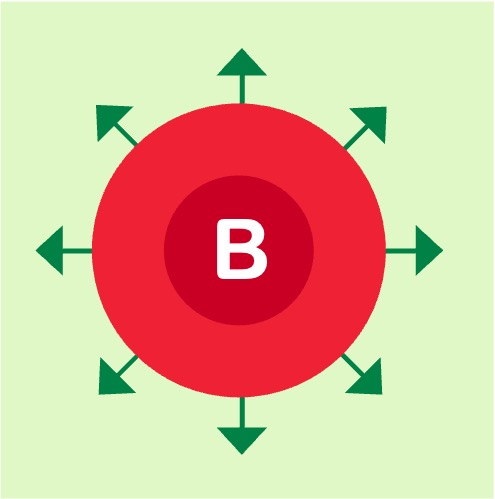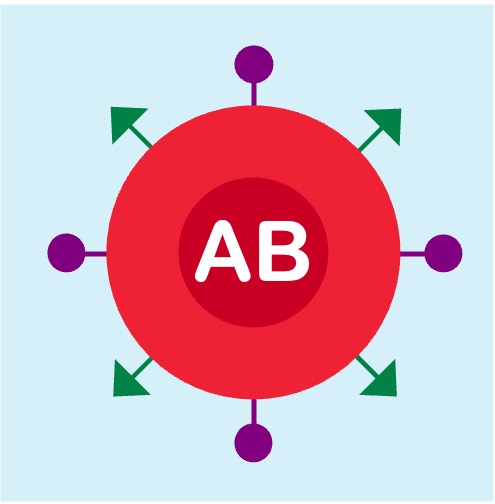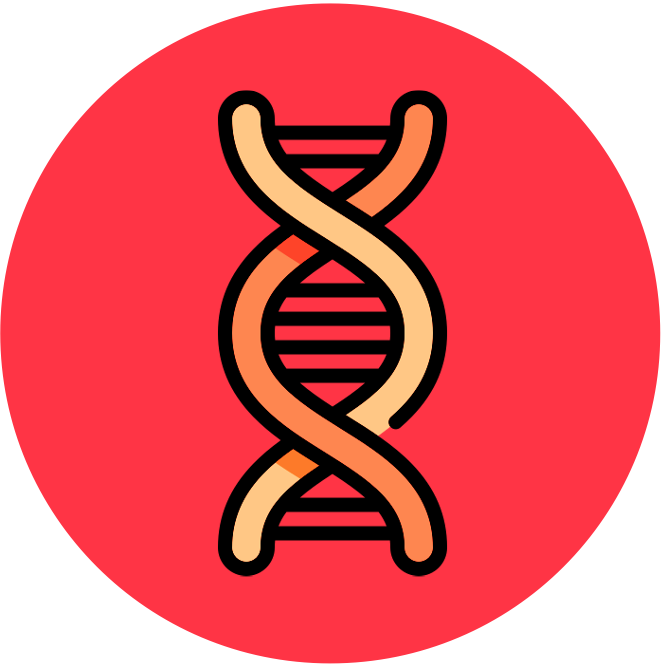

Multiple Alleles
As alleles are alternative versions of a specific gene, the different variants all possess very similar base sequences and only differ from each other by one or a few bases
-
A single nucleotide polymorphism (SNP) is a mutation to a single nucleotide base that is present in a sufficiently large proportion of the population (typically >1%)
Because even a single nucleotide substitution can create phenotypic variation, most genes possess more than just a single dominant and recessive variant
-
In other words, even though individuals only inherit two alleles per gene, there are typically multiple alleles for any given gene within the gene pool
The presence of multiple alleles creates complexity in inheritance patterns that extend beyond a binary dominant / recessive paradigm
-
Some traits may exhibit a dominance hierarchy in their phenotypes (e.g. allele A > allele B > allele C)
-
Other traits may demonstrate a blended or combined phenotype (e.g. incomplete dominance and co-dominance)
When representing a characteristic with multiple alleles, a capital letter is chosen to denote the particular gene and superscripts are used to show the multiple dominant variants (e.g. FA and FB)
Codominance
Codominance occurs when pairs of alleles are both expressed equally in the phenotype of a heterozygous individual
-
Heterozygotes therefore have a distinctive phenotype as the alleles are having a joint effect
An example of co-dominance can be seen in human blood groups, which are determined according to the presence of a surface glycoprotein (antigen)
-
Human blood groups are controlled by a single gene with multiple alleles, each producing a different isoantigen
-
The A and B alleles are codominant (IA and IB), while the O allele is recessive (i)
The genotypes for the different blood groups can be summarised as follows:
-
Phenotype
Genotype
-
Type A
IAIA or IAi
-
Type B
IBIB or IBi
-
Type AB
IAIB
-
Type O
ii
As humans produce antibodies against foreign antigens, blood transfusions are not compatible between certain blood groups
-
Type AB can receive blood from any other type (they already possess both antigenic variants on their cells)
-
Type A cannot receive B blood or AB blood (as the isoantigen produced by the B allele is foreign)
-
Type B cannot receive A blood or AB blood (as the isoantigen produced by the A allele is foreign)
-
Type O can only receive transfusions from other O blood donors (as both antigenic variants are foreign)
ABO Blood Groups




Incomplete Dominance
While codominance occurs when two characteristics are both expressed autonomously in the phenotype, incomplete dominance occurs when the characteristics blend together
-
The genotype is the same in both cases (heterozygous), with the only distinction being in how the traits are manifested in the phenotype
An example of incomplete dominance can be seen in the flower colour of Mirabilis jalapa (commonly called the four o’clock flower or the marvel of Peru)
-
When plants with dark pink flowers (CPCP) are crossed with white-flowered plants (CWCW), the offspring will have light pink flowers (CPCW)
-
This reflects the fact that neither allele for flower colour (dark pink or white) is recessive, so a heterozygous combination produces a blended trait
-
The lighter colouration is caused by the fact that only the allele for a dark pink flower codes for pigment (white flowers produce no pigment), so heterozygotes produce less amounts of pigment
Four O’Clock Flowers

CPCP

CWCW





